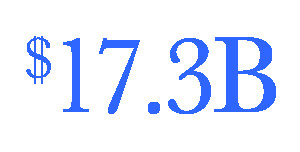Markets closed out 2023 on solid footing and then quickly reached new record highs in January of 2024. While last year brought some unexpected bumps (the bank failures in March, for example) and market volatility, the economy remained resilient while the Fed worked to wrangle
Early on, our asset management team looked beyond the consensus predictions that suggested a recession was imminent or unavoidable. We took a bit of a contrarian view that a recession could very well be avoided, but even if the U.S. were to experience a recession, it would most likely be mild. When we looked at the underlying data points of the economy, we saw resilience in areas like savings rates, real wages, consumer spending and employment.
It's different this time
But we also recognized the fact that the economic environment has been different this time. We have never gone through a pandemic in modern times, when the government quickly added significant amounts of money and quantitative easing into the economy.
Also, recessions are uncommon—we’ve only had four in the last 40 years, so having another one follow quickly on the heels of the pandemic-induced recession of 2020 also would be unusual compared to other economic cycles.
This brings me to my point: Something was going to be different this time. Either the U.S. would have the highly unprecedented event of two recessions within a three-year timeframe, or the economy would defy the long-held probability models, and we would avoid a recession. Most signs currently point to an averted recession and a trajectory of continued economic growth.
2024 outlook
Our outlook is relatively bullish for 2024, particularly in the first half of the year. Interest rates will continue to be a headline. After rapidly raising interest rates over the past two years, the Federal Reserve has now moved into a “watch and wait” posture, while signaling the rate cuts likely will be appropriate at some point in 2024 as post-pandemic inflation moderates.
Reminder: What's the difference between a bull vs. bear market?
Generally speaking, a bull market means stock prices are rising. A bear market is when stock values are heading down. Here's a refresher on what that means for investors.
It’s clear the Fed only will begin lowering rates when they are confident inflation will not spike again. While markets once expected the Fed to lower rates as early as March, it’s likely those cuts will not happen until this summer.
We remain optimistic on U.S. equities. In 2023, gains in the markets were driven by a handful of massive technology companies. In 2024, we expect ongoing economic growth will drive broader market gains, particularly in small- and mid-cap stocks, cyclicals and other value-oriented stocks that have lagged the overall market.
We also maintain our positive outlook on bond markets. We believe U.S. Treasury yields are near their peak for this economic cycle and believe both long- and short-term Treasuries will end 2024 at significantly lower yields, justifying long-term exposure. However, we expect periods of optimism will be balanced by periods of skepticism, keeping volatility relatively high during the transition from a restrictive to a more accommodative monetary policy.
Thrivent’s 2023 financial performance




I am pleased to share that
We saw strong performance in 2023 across our general account, which houses the premiums and assets from our clients. In fact, all general account portfolios performed in line with or outperformed benchmarks in 2023 in an uncertain market environment and following a very strong year in 2022.
Thrivent Mutual Funds continued to perform well, with more than 54% of our funds receiving a 4- or 5-Star Overall Morningstar Ratings™, based on risk-adjusted performance as of Dec. 31, 2023. Thanks to the diligent management of our investment team, we have delivered value and returns across asset classes and in innovative ways.
Our total adjusted surplus reached $17.3 billion1 at the end of the year. This figure is noteworthy because it comprises three important buckets of capital. First, we hold aside a significant amount of capital reserves to be prepared for a worst-case scenario in order to be able to continue to fulfill the promises we make to clients. Another part of this capital includes fraternal dollars, which enable the generosity programs and community impact at the heart of our organization.
Finally, it includes the capital we use to deliver value to our clients through things like dividends, product rate enhancements and investments into the business to continue to serve you well. In 2023, we distributed more than $430 million in dividends and policy enhancements,2 and we expect to increase that figure to $542 million in 2024.
We recognize that we make promises to you, our clients, that may not be fulfilled for decades down the road. Thank you for trusting us to be there when you need us most. We look forward to continuing to serve you in 2024 with purpose-based advice that helps you meet your goals in life.







